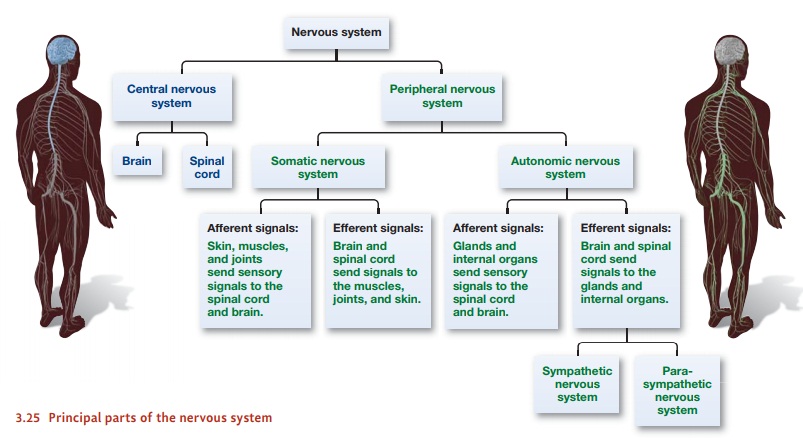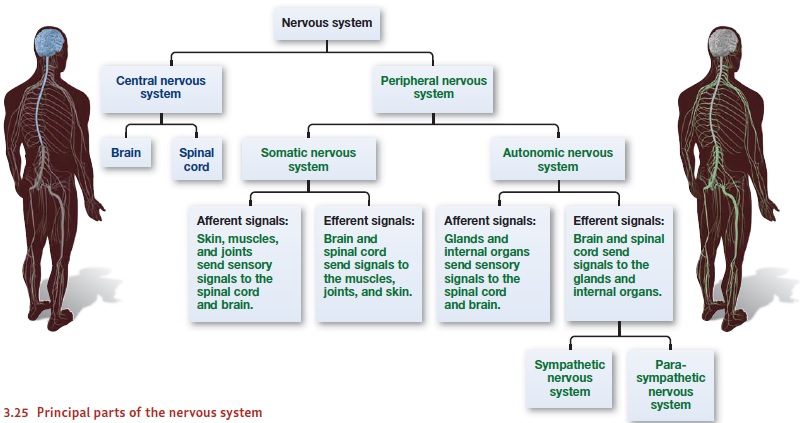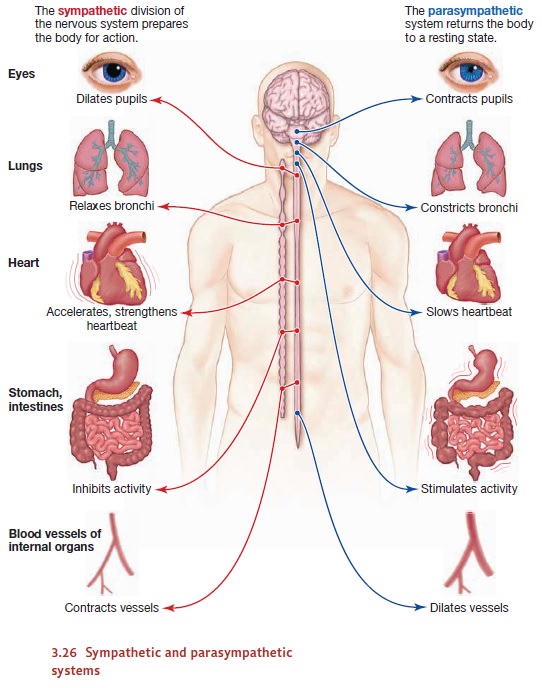Chapter: Psychology: The Brain and the Nervous System
The Central and Peripheral Nervous Systems

The Central and
Peripheral Nervous Systems
At the most general level, the
nervous system can be divided into several parts (Figure 3.25). The central nervous system (CNS) includes
the brain and spinal cord, working as an integrated unit. All nerves elsewhere
in the body are part of the peripheral
nervous system (PNS), and virtually all of the nerves in the
peripheralnervous system connect to the CNS via the spinal cord. This is part
of the reason why damage to the cord is so dangerous, and why the cord is
protected by the bones and connective tissue of the spine. Of course, the
brain, too, is well protected. It’s cov-ered, first, in a shell of bone (the
skull) and three layers of tough membranes (the

meninges). It’s also floating in
a bath of cerebrospinal fluid that
(among other things) acts as a shock absorber when the head moves abruptly this
way or that.
The peripheral nervous system
itself has two distinguishable parts. The somaticnervous
system (SNS) includes all the (efferent) nerves that control the skeletalmuscles
as well as the (afferent) nerves that carry information from the sense organs
to the CNS. The other division—the autonomic
nervous system (ANS)—includes all the (efferent) nerves that regulate the
various glands in the body as well as those that regulate the smooth muscles of the internal organs
and blood vessels. (The name “smooth muscles” refers to how these muscles look
when observed under a micro-scope; this is in contrast to the skeletal muscles,
which look striped.) The ANS also includes (afferent) nerves that bring the CNS
information about these various internal systems.
Finally, the autonomic nervous
system is itself divided into two parts: the sympa-thetic branch, which tends to “rev up” bodily activities in
preparation for vigorousaction, and the parasympathetic
branch, which tends to restore the body’s internal activities to normal
after the action has been completed (Figure 3.26).* These divisions of the ANS
act reciprocally; excitation of the sympathetic branch leads to an increased
heart rate, while excitation of the parasympathetic branch leads to cardiac
slowing. Sympathetic activation produces a slowing down of peristalsis
(rhythmic contractions of the intestines), so that we’re not using energy for
digest-ing when we’re on the run; parasympathetic activation does the
opposite—it speeds up peristalsis.

Related Topics